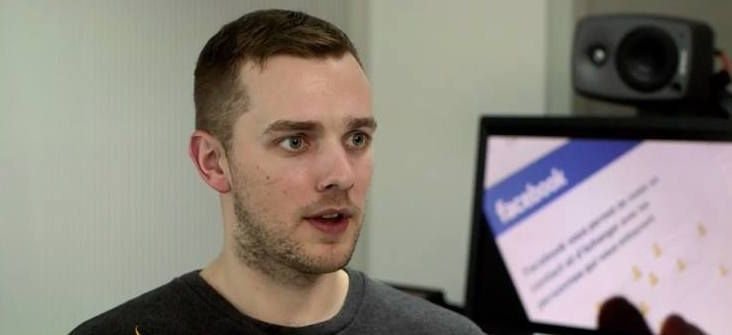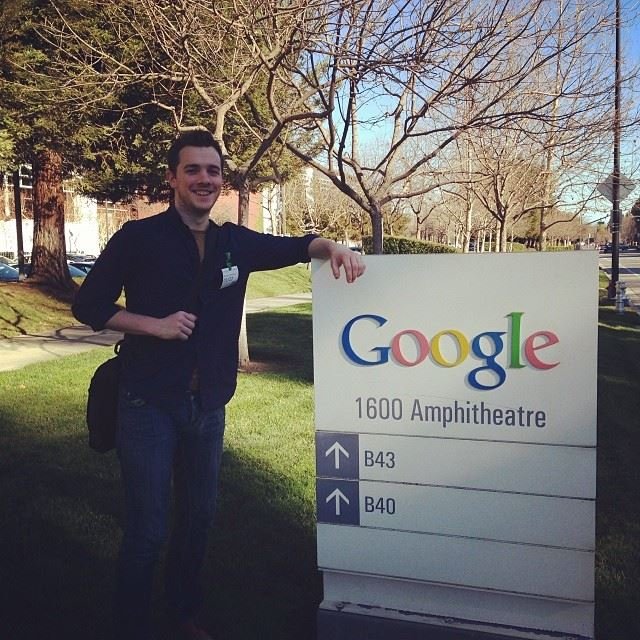"I think Steemit needs to build a movement here. That means advocacy. That’s the single biggest way to grow: make it easy to grow. " says Richard Millington, the founder of FeverBee who has helped more than 250 companies grow some of the world's largest online communities.

In today's "20 questions" interview, Richard explains the importance of community, how online communities differ from in-person communities, and how to deal with toxic individuals who negatively impact the community experience for others.
But, perhaps most importantly, I took this opportunity to ask Richard a few questions that specifically apply to Steemit, such as: How do monetary incentives affect community building? How important are in-person meet-ups (such as SteemFest) for growing an online community? And what are the top things Steemit should focus on if it wants to grow its presence online?
Richard has dug deep and provided thoughtful responses to each of the questions above. I hope you all take away as much from this interview as I did.
20 questions with Richard Millington

1 - How would you describe yourself in one sentence?
Richard - Founder of FeverBee, author of Buzzing Communities, and a huge believer in the importance of building valuable communities for some organizations.
2 - For those who aren't familiar with it, what is "FeverBee?"
Richard - FeverBee provides consultancy, training, and technology to help companies make their community a success. Our focus is on using social psychology, your existing data, and techniques from persuasion to increase membership, engagement, and make the community as valuable as it can be.
3 - What does it mean to have a "sense of community?"
Richard - A sense of community goes beyond what members do and focuses upon how members feel. Do people feel a part of the community? People might click, like, share, and comment, but that doesn’t mean they are truly a part of your community. The only people really in the community are those who believe they are.
A sense of community is highly predictive of retention, levels of participation, and the valuable outputs of community like knowledge sharing, loyalty, and increase in sales.
4 - How do online communities differ from in-person communities?
Richard - In online communities you trade depth for accessibility. Online you can’t see what someone wears, how they speak, their body language, and personal comfort with one another. You can’t easily see the unity of the group. All of these things help us form judgements and make assumptions about people. We can easily distinguish who the top people are and who we want to help.
The problem is building a community offline can be difficult. Community organizers have often been knocking on doors and trying to persuade people to stop watching Lost and come to a gloomy community hall to discuss picking up litter and tackling crime. It’s a hard sell for an apathetic crowd.
Online communities provide accessibility (you don’t even need to be together at the same time), but they come with the catch in depth. Many (like customer support communities) don’t have the same sense of community. But the people that do arrive are usually there because they care about the topic - at least for now. So the challenge is building that community with people who are interested in the topic but don’t have the same investment in it as they would their local area/club etc.

5 - How do most organizations fail when it comes to attempting to build a sense of community?
Richard - In short, everything.
They do almost everything wrong. They make the community too broad and open to as many people as possible. But a sense of community requires a strong sense of membership. That means perceived similarity to one another.
The enthusiasm from the community manager usually isn’t big enough and they fail to provide members with the ability to influence the group, which is critical. They try to control things too tightly. They often avoid discussing topics that people feel most strongly about, but that’s exactly what builds a strong emotional connection with members. They also fail to build a shared sense of history.
You can look all these elements up here.
6 - From a social psychology point of view, why is it important for us to be part of a community?
Richard - This is more sociology and social psychology.
Online communities provide us with a place to explore, influence our surroundings, emotional support and a sense of belonging. To many, they provide a place where we’re not alone anymore. That’s incredibly powerful.
Robert Putnam, in Bowling Alone, noted how the social capital created by communities helped members become healthier, happier, and wealthier. One of the strongest predictors of happiness is our attachment to strong, vibrant, communities.
7 - How should a community deal with an individual who brings a toxic attitude to the group?
Richard - The common answer would be to talk to the person, understand them in a phone call or face-to-face situation. It’s harder for people to continue to be toxic then.
My answer is usually just to remove the person. There are plenty of stories of people whose attitudes have been changed by a simple chat, but the time it takes to do that with each person is better spent on the people who are participating well. You could do amazing things for them.
So remove toxic members fast.
8 - You've spoken about the importance of community rituals. What is the most unique community ritual you've come across?
Richard - I think ‘unique’ is the wrong approach. Boys of the Satere-Mawa tribe in Brazil, for example, must go through a ritual of wearing gloves of bullet ants (the insect with the most painful sting in the world) 20 times to become accepted as a man. I’m sure it works, but it doesn’t translate well to other cultures. The North Africa Masai tribe circumcises boys aged 12 to 24 (without anaesthetic) during which time they can’t even wince in pain without dishonour.
For online community professionals, I’d recommend trying something far simpler (and less painful). Have your members share what they’re working on each week, their challenge each week, welcome newcomers to the group, ask people to share their funniest or worst mistakes in the field. The younger men of the group will thank you for it!

9 - How has social media impacted communication within communities?
Richard - Social media has taken many of the discussions from chat rooms and forums into a domain in which the company has far less control. It has devastated many communities but created equally as many. Communities today are less about being siloed within a single platform and more about engaging with audiences across many platforms.
The bigger concern is whether a dominant community platform such as Facebook, LinkedIn, Reddit, StackExchange etc...might become the ‘de-facto’ place for communities. If you spend all your time there, why not have your community there as well?
It’s very risky to build a community on a platform you don’t own or control. If Facebook suddenly begins charging you to reach group members, that’s a big problem.
10 - Are sub-communities helpful or harmful when it comes to the success of a larger community?
Richard - They’re critical to sustain a strong sense of community.
11 - Steemit is a blockchain database that supports community building and social interaction with cryptocurrency rewards. In your opinion, how can monetary incentives affect community building?
Richard - Monetary incentives are traditionally a bad thing. People stop participating for intrinsic reasons and start participating for extrinsic rewards. But the rewards usually aren’t sustainable. Yet with a big enough ‘mass’ of members it could definitely work.
12 - What is the number one thing a website like Steemit should focus on if it wants to expand as an online community?
Richard - Call us! :-)
Seriously, a few things…
First, fix the registration / login process, which seems broken as I reply to this (and has been for a while).
Second, decide what it wants its members to be. Are they readers, sharers, teachers, advocates? What do they want their members to become? I think Steemit needs to build a movement here. That means advocacy. That’s the single biggest way to grow: make it easy to grow.
Third, embrace the meta. People want to know what’s going on at Steemit. You need more transparency to attract more advocates. People love the idea, but now they want to feel part of the movement. They need to know more about Steemit and the meta-news for that to work.
Fourth, build profiles of each group they want in the community. Understand what each profile needs from the community? What do newcomers need and want? How about veterans? How about lurkers ? Do a lot of interviews and ethnographic research to see exactly where people get stuck, how they share it, and what you can do with it.
13 - How important is it for online communities to periodically put together events or meet-ups to encourage in-person interaction?
Richard - Depends on the community, but for the most part it’s pretty useful to be able to do it. Be careful about excluding people who can’t attend, though. Often it’s only a small % of members who attend and the rest who get spammed with content about it.

14 - What led you down this career path? Have you always been passionate about building communities?
Richard - I became involved in building communities in the video gaming sector some 16 or so years ago. I loved the nature of online communities and feeling a part of something special - even if I was just sitting in my bedroom at the time.
After graduating, I did an internship with a guy named Seth Godin in New York, and then began doing more and more work building online communities. It’s been a fun ride.
15 - Where do you see yourself 10 years from now?
Richard - No idea (truly).
16 - As a blogger, where do you find the time to publish posts on–almost–a daily basis?
Richard - It’s about priorities. The blog is a priority for me. It’s more important than client work, admin work, and promotional work. The blog is as much for me as it’s about the people that read it. It forces me to consider new ideas, reflect upon what is and isn’t working, and think logically through some issues.
It also helps that we’re exposed to a huge amount of people in the community space. I just came back from a trip to San Francisco where I interviewed around 20 community professionals to get a sense of who they are and what they are struggling with.
17 - Who inspires you?
Richard - I still find Seth Godin’s work inspirational, Ramit Sethi’s work quite logical, and authors such as Eric Ries to be quite tactical. I’m very inspired by the work in the community space by Phoebe Venkaat, Allison Leahy, Rachel Happe and others in building internal support and frameworks for communities.
18 - You get to have dinner with three people, living or dead. Who are you eating with?
Richard - My wife and my (sadly deceased) grandparents. I’d love those guys to have met.

19 - What is one community you're not currently part of, but would like to be?
Richard - I honestly can’t think of one, I’m privileged to be in every community I’d like to be today.
20 - What is one thing very few people know about you?
Richard - I’ve met Paul McCartney and Angelina Jolie, if that’s worth anything?
My thank you goes out to Richard for giving all of us some key takeaways, which I believe can help grow Steemit's online community and sub-communities.
As always, thanks to all of you for taking the time to read.
Who would you like to see me throw 20 questions at? Drop me a comment below and I'll work on setting up the interview.
If you like what you read, be sure to follow my blog!

Previous "20 questions" interviews:
20 questions with @heiditravels
20 questions with @katecloud
20 questions with @manthostsakirid
20 questions with @blockchaingirl
20 questions with @piedpiper
20 questions with @stellabelle
20 questions with @budgetbucketlist
20 questions with @rogerkver
20 questions with @allasyummyfood
20 questions with @the-alien
20 questions with Janina Storace
20 questions with @mrs.steemit
20 questions with @andrarchy
20 questions with Scott Young
20 questions with Jesse Heiman
20 questions with @dragosroua
20 questions with Chelsea Dinsmore
20 questions with @sirwinchester
20 questions with Ludvig Sunström
20 questions with Kyle Eschenroeder
20 questions with @roelandp
20 questions with Tim Brownson
20 questions with Sean Ogle
20 questions with Henri Junttila
20 questions with Hal Johnson
20 questions with Farnoosh Brock
20 questions with Manny Kess
20 questions with John Goehrke
20 questions with Sunny Lenarduzzi
20 questions with The Cranky Flier - Brett Snyder
20 questions with Shawn Murphy
20 questions with Leo Babauta
20 questions with Jacob Staudenmaier
20 questions with Steve Scott
20 questions with Stefan Hyttfors
20 questions with Zachery Ty Bryan
20 questions with Ryan Lancaster

